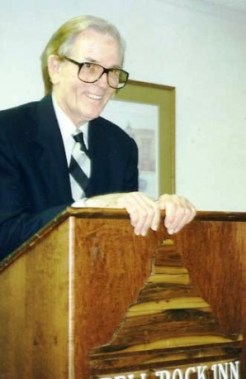Lectures by
Charlie Lutes:
- 55. From Physical to Spiritual
- 56. Prana
- 57. Prana and Apana
- 58. Real and Unreal
- 59. Who Am I?
- 60. Living the Good Life
- 61. Transmutation of the Sexual Force
- 62. The Relative and the Absolute
- 63. The Well of Life
- 64. The Way to Heaven is Through Hell
- 65. Happiness in Life
- 66. One Cannot Travel on Two Paths
- 67. Wealth and Spirituality
- 68. What We Really Are
- 69. Attachment and Detachment
- 70. Man Moving Toward Wisdom
- 71. The Road to Reason
- 72. The Meaning of Life
- 73. The Unfoldment of a Spiritual Life
- 74. Virtue
- 75. Perfection of the Mind
- 76. The New Mind
- 77. Soul Mates
- 78. Morality Versus Spirituality
- 79. Rebirth
- 80. The Maya of Life
- 81. Human Evolution
- Additional Lectures
- Home
Lectures by
Charlie Lutes

Prana is the life force itself. In Sanskrit it is synonymous with life and it is also the name of the life-breath we take in with each inhalation. Prana is also the name of one of the five major airs in the body. Prana, as a body air, is situated in the cavity of the mouth and it enables food to pass through into the stomach. It resides normally in the area from the nostrils to the lungs and its location near the heart preserves life from destruction.
Prana maintains the other elements of the body in balance and controls their function. It is with the help of prana that we are able to move, think, see and hear.
From birth to death prana plays a crucial role in our lives. At the time of birth it is the air that gives energy during delivery. At death it collects all vital energy from the body and flows out, leaving a lifeless corpse behind. Prana is like a faithful servant who fulfills all the demands of his master, but does not in return demand of his master any reward for his services. Prana is devoted to the service of self-consciousness twenty-four hours per day. Yet, prana is also temperamental. A slight change in the attitude of the master affects its speed and rhythm cycle. A good master, understanding the devotion of his servant, must try to help prana evolve. The methods to accomplish this are called pranayama, one of the most essential yogic disciplines.
In yoga, prana is of primary importance. With the practice of pranayama the yogi directs the flow of prana downwards toward the pelvic plexus, where it mixes with apana, the air which resides in the lower intestines. When prana and apana flow together through sushumna (the central passage of the spinal column) to the top of the head, the experience of samadhi takes place, which is the goal of all yogic practice.
Prana is not to be confused with oxygen. It is the energy in the gross physical body that feeds on oxygen. Prana maintains the existence of the physical body. Prana is life. To understand prana, life and consciousness must be seen as distinct from each other. Life is a vehicle through which consciousness manifests, and prana is the energizing force of life. When life ceases, consciousness does not. While prana is the air that takes in energy from outside the system through the lungs and aids in conveying food-energy to the stomach, apana serves the opposite function.
Apana literally means, downwards. And, this is the air responsible for the elimination of energy from the body. Apana resides in the lower intestines. Apana expels the child from the womb and causes downward discharges of energy. Apana is the air responsible for urination, defecation and ejaculation. The importance of apana is not well understood in the West. It is known that there are intestinal gases, but the full reason is unknown.
There are many remedies for conditions brought on by apana, but there is no understanding of their cause. According to Indian medical science, Apana is the great cleanser of the system. The digestive process releases gases trapped in foods through the chemical interaction of the foods and the digestive juices in the intestines. These gases are produced in greater quantity when the food is improperly digested or when the circulation of juices has been disturbed (raw foods, nuts and seeds produce more gas.)
When, for whatever reason, the gases are disturbed they start moving upward instead of down. This unbalances the chemical system of the organism. If the gases reach the heart, they may produce high blood pressure, heart palpitations, or even a heart attack. If driven still higher, disorders of the respiratory tract ensue. If the gases reach the head, then schizophrenia may result.
When prana, which is charged with positive ions, is made to function with apana, and forced to enter through the central canal into the spinal column, a great fusion takes place between the positive ions of prana and the negative ions of apana. This generates a great amount of energy at the base of the spine called kundalini.
"When prana and apana flow together
through shushumna (the central passage
of the spinal column) to the top of the
head, the experience of samadhi takes place,
which is the goal of all yogic practice."
© 2005-2011 by Vincent J. Daczynski. All Rights Reserved.